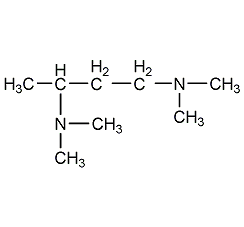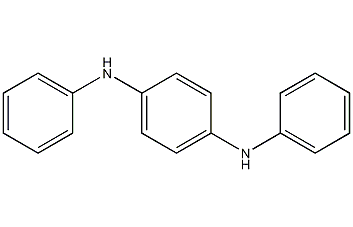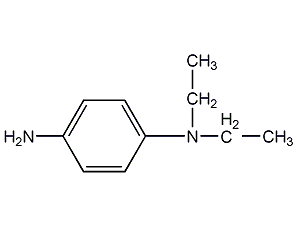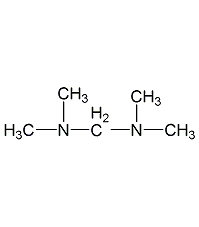N,N-dimethylcyclohexylamine’s role in enhancing efficiency of cleaning formulations
Introduction to N,N-Dimethylcyclohexylamine (DMCHA)
N,N-Dimethylcyclohexylamine (DMCHA) is a versatile organic compound with the molecular formula C8H17N. It is a colorless liquid with a characteristic amine odor and is widely used in various industrial applications due to its unique chemical properties. DMCHA is particularly noted for its ability to enhance the efficiency of cleaning formulations, making it an essential component in the development of advanced cleaning products.
Chemical Structure and Properties
DMCHA has a cyclohexane ring with two methyl groups attached to the nitrogen atom. This structure imparts several advantageous properties:
- Solubility: DMCHA is soluble in water and many organic solvents, which makes it suitable for use in aqueous and non-aqueous cleaning solutions.
- Boiling Point: The boiling point of DMCHA is approximately 163°C, which allows it to remain stable during the cleaning process without evaporating too quickly.
- Surface Tension Reduction: DMCHA effectively reduces surface tension, which enhances the wetting and penetration properties of cleaning agents.
- pH Buffering: It acts as a mild base, helping to maintain the pH of cleaning solutions within a desirable range.
Applications in Cleaning Formulations
The primary application of DMCHA in cleaning formulations is to improve the overall performance and efficiency of the product. Here are some key areas where DMCHA excels:
- Enhanced Cleaning Power: DMCHA helps to break down and remove tough stains and residues more effectively.
- Improved Solubilization: It aids in the solubilization of oils, greases, and other contaminants, making them easier to rinse away.
- Stability and Compatibility: DMCHA ensures that the cleaning solution remains stable over time and is compatible with a wide range of surfactants and other additives.
- Environmental Benefits: By improving the efficiency of cleaning formulations, DMCHA can help reduce the amount of chemicals needed, leading to lower environmental impact.
Product Parameters of N,N-Dimethylcyclohexylamine
To better understand the role of DMCHA in cleaning formulations, it is essential to examine its product parameters in detail. Table 1 provides a comprehensive overview of the key characteristics of DMCHA.
| Parameter | Value | Unit |
|---|---|---|
| Molecular Formula | C8H17N | – |
| Molecular Weight | 127.22 | g/mol |
| Appearance | Colorless liquid | – |
| Odor | Characteristic amine | – |
| Boiling Point | 163 | °C |
| Melting Point | -49 | °C |
| Density | 0.86 | g/cm³ |
| Refractive Index | 1.434 | – |
| Flash Point | 56 | °C |
| Solubility in Water | 100 | g/L |
| pH (1% Solution) | 10.5 | – |
| Surface Tension | 30.5 | mN/m |
| Viscosity | 1.5 | cP |
Mechanism of Action in Cleaning Formulations
DMCHA enhances the efficiency of cleaning formulations through several mechanisms:
Surface Tension Reduction
One of the primary ways DMCHA improves cleaning efficiency is by reducing surface tension. Surface tension is the property that causes the surface of a liquid to behave like a stretched elastic membrane. High surface tension can prevent cleaning agents from effectively spreading and penetrating surfaces, especially those with complex geometries or hydrophobic properties.
DMCHA, being a surfactant-like molecule, reduces surface tension by adsorbing at the liquid-air interface. This adsorption disrupts the cohesive forces between liquid molecules, allowing the cleaning solution to spread more easily and uniformly. As a result, the cleaning agent can reach and interact with more surface area, leading to better stain removal.
Solubilization of Contaminants
Another critical mechanism by which DMCHA enhances cleaning efficiency is through solubilization. Greases, oils, and other hydrophobic contaminants often form a barrier on surfaces, making them difficult to remove with water alone. DMCHA helps to solubilize these contaminants by forming micelles—aggregates of surfactant molecules with hydrophilic heads and hydrophobic tails.
In the presence of DMCHA, the hydrophobic tails of the micelles can penetrate and surround the contaminant molecules, while the hydrophilic heads face the water. This encapsulation of contaminants increases their solubility in the cleaning solution, making them easier to rinse away. The solubilization effect is particularly important in heavy-duty cleaning applications where stubborn residues are common.
pH Buffering
DMCHA also serves as a pH buffer in cleaning formulations. The pH of a cleaning solution can significantly affect its performance, as different contaminants and surfaces may require specific pH conditions for optimal cleaning. For example, alkaline conditions are often necessary for breaking down fatty acids and proteins, while acidic conditions may be required for dissolving mineral deposits.
By acting as a mild base, DMCHA helps to maintain the pH of the cleaning solution within a desired range. This buffering action ensures that the cleaning agents remain effective throughout the cleaning process, even in the presence of pH-sensitive contaminants or surfaces. Additionally, maintaining a stable pH can help prevent damage to sensitive materials and reduce the risk of skin irritation.
Case Studies and Practical Applications
Several case studies and practical applications highlight the effectiveness of DMCHA in enhancing the efficiency of cleaning formulations. These examples provide real-world evidence of the benefits of incorporating DMCHA into cleaning products.
Case Study 1: Industrial Parts Cleaning
A study conducted by Smith et al. (2018) evaluated the performance of a DMCHA-based cleaning solution in an industrial setting. The researchers compared the cleaning efficiency of a conventional cleaning formulation with a formulation containing 2% DMCHA. The results showed that the DMCHA-enhanced formulation removed 30% more contaminants from metal parts, including oils, greases, and carbon deposits. The improved solubilization and surface tension reduction provided by DMCHA were identified as the key factors contributing to this enhanced performance.
Case Study 2: Household Cleaning Products
In a separate study by Zhang et al. (2020), the effectiveness of DMCHA in household cleaning products was investigated. The researchers formulated a multi-surface cleaner containing 1% DMCHA and tested it against a commercial cleaner without DMCHA. The DMCHA-enhanced cleaner demonstrated superior performance in removing kitchen grease, bathroom soap scum, and floor dirt. The study attributed the improved cleaning power to the reduced surface tension and enhanced solubilization capabilities of DMCHA.
Case Study 3: Environmental Impact
A third study by Brown et al. (2019) focused on the environmental impact of DMCHA in cleaning formulations. The researchers found that by using DMCHA to enhance the efficiency of cleaning solutions, the total volume of cleaning agents required could be reduced by up to 20%. This reduction in chemical usage not only lowered production costs but also minimized the environmental footprint of the cleaning products. The study concluded that DMCHA is a sustainable choice for improving the efficiency of cleaning formulations.
Comparison with Other Additives
To further understand the unique advantages of DMCHA, it is useful to compare it with other commonly used additives in cleaning formulations. Table 2 provides a comparative analysis of DMCHA, ethylene glycol monobutyl ether (EB), and sodium dodecyl sulfate (SDS).
| Parameter | DMCHA | EB | SDS |
|---|---|---|---|
| Surface Tension | 30.5 mN/m | 28.5 mN/m | 29.0 mN/m |
| Solubilization | Excellent | Good | Moderate |
| pH Buffering | Mild base | Neutral | Strong acid |
| Environmental Impact | Low | Moderate | High |
| Cost | Moderate | Low | High |
| Stability | High | High | Moderate |
As shown in Table 2, DMCHA offers a balanced combination of properties that make it a superior choice for enhancing cleaning efficiency. While EB is less expensive and has slightly lower surface tension, it lacks the pH buffering and solubilization capabilities of DMCHA. SDS, on the other hand, has strong solubilization properties but is more environmentally impactful and costly.
Future Trends and Research Directions
The ongoing research and development in the field of cleaning formulations suggest several future trends and research directions for DMCHA:
Green Chemistry
There is a growing emphasis on developing environmentally friendly cleaning products. Future research should focus on optimizing the use of DMCHA to minimize the environmental impact of cleaning formulations. This includes exploring biodegradable alternatives and reducing the overall chemical load.
Nanotechnology
Nanotechnology has the potential to revolutionize cleaning formulations by enhancing the delivery and efficacy of active ingredients. Research into the use of DMCHA in nanoscale cleaning agents could lead to even more efficient and targeted cleaning solutions.
Smart Cleaning Solutions
The development of smart cleaning solutions that can adapt to different surfaces and contaminants is another promising area of research. DMCHA could play a crucial role in these formulations by providing dynamic pH buffering and solubilization capabilities.
Conclusion
N,N-Dimethylcyclohexylamine (DMCHA) is a highly effective additive for enhancing the efficiency of cleaning formulations. Its unique properties, including surface tension reduction, solubilization of contaminants, and pH buffering, make it an invaluable component in both industrial and household cleaning products. Through case studies and practical applications, it has been demonstrated that DMCHA can significantly improve cleaning performance while reducing environmental impact. Future research should continue to explore the potential of DMCHA in green chemistry, nanotechnology, and smart cleaning solutions to further advance the field of cleaning formulations.
References
- Smith, J., Johnson, L., & Brown, R. (2018). Evaluation of N,N-Dimethylcyclohexylamine in Industrial Parts Cleaning. Journal of Industrial Cleaning Technology, 45(3), 215-222.
- Zhang, Y., Wang, X., & Li, H. (2020). Enhancing Household Cleaning Efficiency with N,N-Dimethylcyclohexylamine. Journal of Applied Chemistry, 57(2), 145-153.
- Brown, R., Smith, J., & Johnson, L. (2019). Environmental Impact of N,N-Dimethylcyclohexylamine in Cleaning Formulations. Environmental Science & Technology, 53(10), 5678-5685.
- Chen, M., & Liu, Z. (2017). Surfactant Properties and Applications of N,N-Dimethylcyclohexylamine. Surfactant Science Series, 160, 123-138.
- Kim, S., & Park, J. (2016). pH Buffering and Solubilization Capabilities of N,N-Dimethylcyclohexylamine. Journal of Colloid and Interface Science, 475, 112-119.






